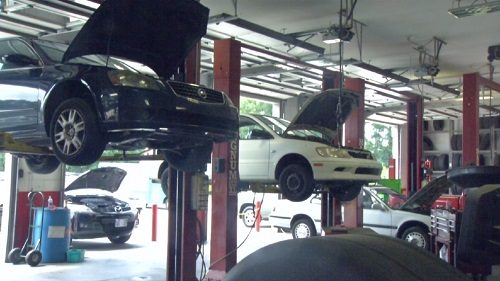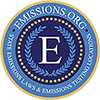
Last updated on April 12th, 2018
Understanding the various terms and acronyms associated with vehicle emission ratings and standards can be a difficult task. Not only are the requirements currently changing, but different sets of terms defining various levels of cleanliness are used, depending on the U.S. state. We break down Tier I and II emission standards as defined by the Environmental Protection Agency, as well as Low Emission Vehicle standards developed by California and adopted by certain other states.
Tier I emission standards
As a result of the Clean Air Act Amendments of 1990, Tier I emission standards were defined and implemented in a progressive manner from 1994 to 1997 by the U.S. Environmental Protection Agency. All light-duty vehicles with a gross vehicle weight rating (combined curb weight and rated cargo/passenger capacity) under 8,500 pounds were subject to Tier I standards. However, the EPA separated qualifying vehicles into three categories: passenger cars, “light” light-duty trucks (below 6,000 pounds GVWR) and “heavy” light-duty trucks (above 6,000 pounds GVWR). Each truck category was then split again according to weight, yielding five levels of compliance.
Various types of pollution are regulated, including total hydrocarbons (THC), non-methane hydrocarbons (NMHC), carbon monoxide (CO), oxides of nitrogen (NOx) and particulate matter (PM). Separate standards are set for 50,000 miles/5 years (Immediate Life) and 100,000 miles/10 years (Full Useful Life). Heavy LDTs must comply over a 120,000-mile/11-year Useful Life term. As vehicle weights increase, thresholds of compliance either increase or remain the same. As such, passenger cars are subject to the strictest standards, while the heaviest trucks and SUVs are regulated under more lenient standards.
A consistent testing method
In order to ensure consistent vehicle emission testing, the Federal Test Procedure (FTP-75) is used for all light-duty vehicles. Covering 11.04 miles and lasting 31 minutes and 14 seconds, the test averages 21.2 miles-per-hour and is split into three phases: the Cold Start Phase (8 min, 25 sec), Transient Phase (14 min, 24 sec) and Hot Start Phase (8 min, 25 sec). Speeds do not exceed 60 mph, and over 20 stops are included over the entire course. Emissions from the three phases are recorded separately, and are weighted as follows: Transient Phase (50 percent), Hot Start Phase (28.5 percent) and Cold Start Phase (21.5 percent).
Beginning with 2000 model year vehicles, two Supplemental Federal Test Procedures (SFTP) were implemented to better reflect both high-speed driving and air conditioning usage. The US06 SFTP emulates rapid acceleration and highway driving up to 80.3 mph over an 8.0-mile course that takes 9 minutes and 56 seconds to complete. Average speed is 48.4 mph.
Next, the SC03 SFTP addresses air conditioning usage, covering 3.6 miles at an average speed of 21.6 mph. The test takes 9 minutes and 56 seconds and reaches a top speed of 54.8 mph.
Specific figures and graphical representations are available at: http://www.dieselnet.com/standards/us/ld.php.
Tier II emission standards
Tier II standards as defined by the EPA are quite a bit stricter than the Tier I parameters. The new Tier II regulations were signed in December of 1999, and their phase in began in 2004. By 2009, Tier II will be implemented across the entire industry.
A big change is that the classes of vehicles within the light-duty category are no longer subject to unique emission standards. Instead, a manufacturer’s fleet must average a certain level of compliance. Fuel types are also no longer regulated separately, meaning that gasoline, diesel and alternative fuels must all meet the same targets. Standards are expressed in grams of pollutants per mile, so vehicles with larger engines must use more advanced emission control systems.
Additionally, the EPA is now regulating medium-duty passenger vehicles (MDPVs) with gross vehicle weight ratings between 8,500 and 10,000 pounds; these were excluded under the Tier I program. Three separate evaluations – pre-production, early production and in-use (after several years) – are employed in determining emissions compliance. The Federal Test Procedure and Supplemental (high-speed and air-conditioning) FTPs from Tier I continue to be used, although some vehicle classes (MDPVs and alternative fuel light vehicles/trucks) are exempt from SFTPs.
Separate standards still exist for Intermediate Life (50,000 miles/5 years) and Full Useful Life, but the full span has been expanded to 120,000 miles/10 years for passenger cars and “light” light duty trucks. For “heavy” light-duty trucks and MDPVs, the term continues to be 120,000 miles or 11 years.
Certification Bins
Rather than defining specific standards for each individual vehicle class, the EPA has created certification “bins” with different levels of cleanliness. There are eight permanent bins (1-8) and three temporary bins (9-11), with Bin 1 being the cleanest (zero emissions) and Bin 11 being the dirtiest. The temporary levels are being used in the phase in period (2004-2009) and will disappear after the 2008 model year.
Manufacturers certify vehicles to each bin, and when Tier II is fully implemented each manufacturer will have to achieve a fleet average of Bin 5. The EPA does not specifically mandate Bin 5 compliance, but instead requires fleets to emit an average of 0.07 grams/mile or less of NOx over the Full Useful Life. It just so happens that Bin 5 meets this standard over the full life period; Bin 4 only allows 0.04 g/mile of NOx, while Bin 6 regulates to 0.10 g/mile. So any vehicle that a car company sells which achieves Bin 6-8 (or 9-11 temporarily) must be offset by another that is cleaner than Bin 5.
The phase in period works as such: each year, a progressively larger percentage of vehicles from each manufacturer must average the Bin 5 average standard. For passenger cars and “light” light-duty trucks, 25 percent of a manufacturer’s fleet had to comply for the 2004 model year. That number jumped to 50 percent for 2005, 75 percent for 2006 and 100 percent for 2007. During the years that full compliance was not required, vehicles that were not used in achieving the Bin 5 average still had to meet one of the permanent or temporary bins, with average NOx emissions of 0.30 g/mile (Bin 9). These are called “interim non-Tier II” vehicles.
“Heavy” light-duty trucks and MDPVs are subject to different phase in rules. For 2008, 50 percent of these models must meet the Bin 5 standards, and in 2009 that percentage changes to 100 percent. Since 2004, however, the larger vehicles have been regulated under progressive standards that require 0.20 g/mile or less of NOx (Bin 8). For the 2004 model year, 25 percent had to comply with the Bin 8 average, and that percentage jumped to 50 percent for 2005, 75 percent for 2006 and 100 percent for 2007-2008.
While this may seem confusing, the summation is simple: by the 2009 model year, all light- and medium-duty passenger vehicles must average Bin 5, or 0.07 grams per mile of NOx. Charts with specific values are available at: http://www.dieselnet.com/standards/us/ld_t2.php
Credits and Deficits
Car companies that perform better than the Bin 5 average earn credits, while those that perform worse acquire deficits. These credits may be saved by a manufacturer for later use, or traded to other automakers. Should a manufacturer find itself deficient one year, it must “repay” that deficit within three years either with credits it earns itself or credits bartered from other companies.
California Low Emission Vehicle standards
California has decided to implement its own emission standards, and several states have adopted the tougher criteria. Maine, Massachusetts, New York and Vermont require California compliance, and many other states (Connecticut, New Jersey, Oregon, Pennsylvania, Rhode Island and Washington) have or are considering the CA program.
Low Emission Vehicle (LEV) standards
Through the year 2003, California operated under Low Emission Vehicle (LEV, or sometimes LEV I) standards. Emission categories were created based on cleanliness. These included: Tier I, Transitional Low Emission Vehicle (TLEV), Low Emission Vehicle (LEV), Ultra Low Emission Vehicle (ULEV), Super Ultra Low Emission Vehicle (SULEV) and Zero Emission Vehicle (ZEV).
The Federal Test Procedure was used, and Supplemental tests were implemented progressively between 2001 and 2005. Both diesel and gasoline cars were subject to the same standards, and medium-duty vehicles were regulated. A full explanation is available at: http://www.dieselnet.com/standards/us/ld_ca.php#lev
Low Emission Vehicle II (LEV II) standards
Beginning in 2004 and running through 2010, LEV II standards went into effect. The rules are stricter now, as light trucks below 8,500 GVWR now must comply with passenger car standards; under LEV I they were regulated differently.
Low Emission Vehicle (LEV), Ultra Low Emission Vehicle (ULEV), Super Ultra Low Emission Vehicle (SULEV) are the categories that remain, and are significantly more restrictive than before. For passenger cars and light-duty trucks, LEV is equivalent to the Tier II Bin 5 standards, and SULEV is slightly more stringent than Bin 2 levels over the Full Useful period. ULEV matches Bin 3 (Full Useful), except that more NOx is allowed.
More information is available at: http://www.dieselnet.com/standards/us/ld_ca.php#levii
Partial Zero Emission Vehicle (PZEV)
Another category, Partial Zero Emission Vehicle (PZEV), is used to identify SULEV compliant cars that also produce zero evaporative emissions from the fuel system and include a 150,000-mile/15-year warranty on the emission control equipment. The Advanced Technology Partial Zero Emission Vehicle (AT-PZEV) rating simply indicates that a unique powertrain system (hybrid-electric, compressed natural gas) has been applied.
